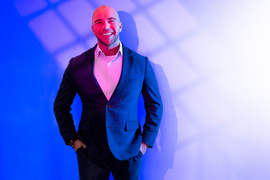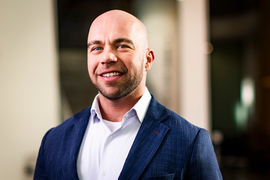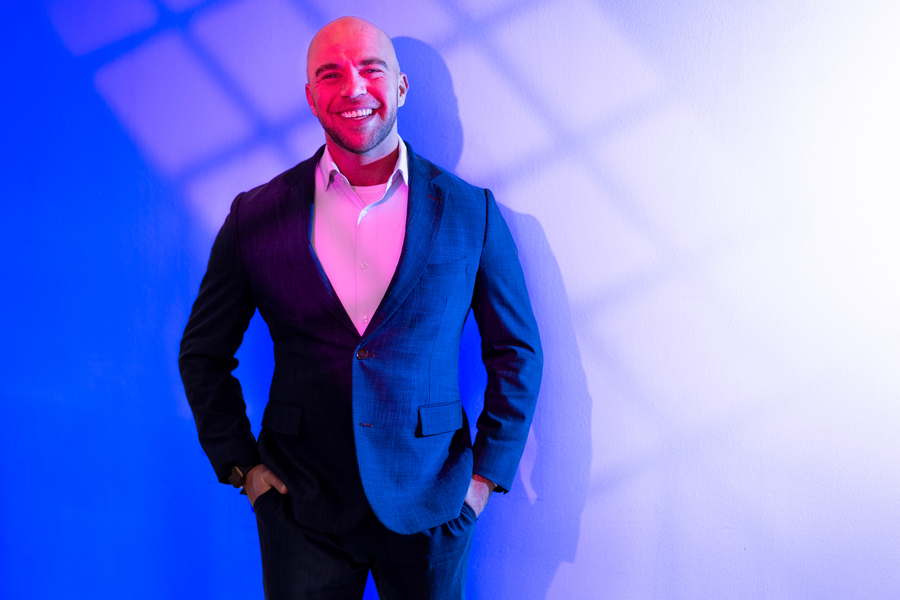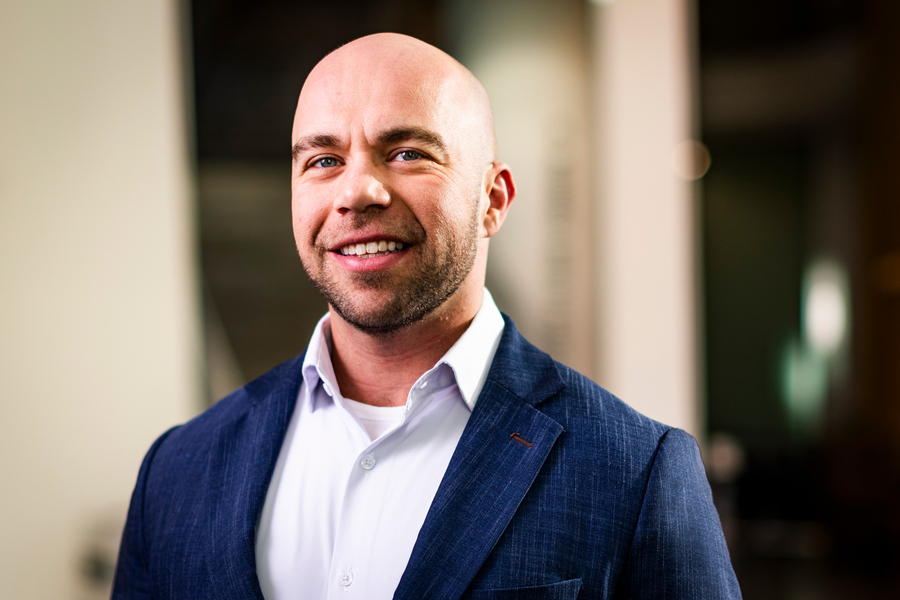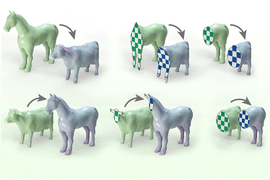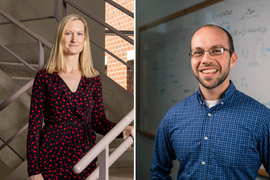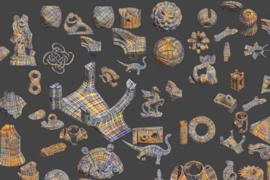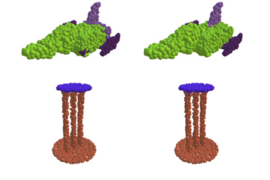More than 2,000 years ago, the Greek mathematician Euclid, known to many as the father of geometry, changed the way we think about shapes.
Building off those ancient foundations and millennia of mathematical progress since, Justin Solomon is using modern geometric techniques to solve thorny problems that often seem to have nothing to do with shapes.
For instance, perhaps a statistician wants to compare two datasets to see how using one for training and the other for testing might impact the performance of a machine-learning model.
The contents of these datasets might share some geometric structure depending on how the data are arranged in high-dimensional space, explains Solomon, an associate professor in the MIT Department of Electrical Engineering and Computer Science (EECS) and a member of the Computer Science and Artificial Intelligence Laboratory (CSAIL). Comparing them using geometric tools can bring insight, for example, into whether the same model will work on both datasets.
“The language we use to talk about data often involves distances, similarities, curvature, and shape — exactly the kinds of things that we’ve been talking about in geometry forever. So, geometers have a lot to contribute to abstract problems in data science,” he says.
The sheer breadth of problems one can solve using geometric techniques is the reason Solomon gave his Geometric Data Processing Group a “purposefully ambiguous” name.
About half of his team works on problems that involve processing two- and three-dimensional geometric data, like aligning 3D organ scans in medical imaging or enabling autonomous vehicles to identify pedestrians in spatial data gathered by LiDAR sensors.
The rest conduct high-dimensional statistical research using geometric tools, such as to construct better generative AI models. For example, these models learn to create new images by sampling from certain parts of a dataset filled with example images. Mapping that space of images is, at its core, a geometric problem.
“The algorithms we developed targeting applications in computer animation are almost directly relevant to generative AI and probability tasks that are popular today,” Solomon adds.
Getting into graphics
An early interest in computer graphics started Solomon on his journey to become an MIT professor.
As a math-minded high school student growing up in northern Virginia, he had the opportunity to intern at a research lab outside Washington, where he helped to develop algorithms for 3D face recognition.
That experience inspired him to double-major in math and computer science at Stanford University, and he arrived on campus keen to dive into more research projects. He remembers charging into the campus career fair as a first-year and talking his way into a summer internship at Pixar Animation Studios.
“They finally relented and granted me an interview,” he recalls.
He worked at Pixar every summer throughout college and into graduate school. There, he focused on physical simulation of cloth and fluids to improve the realism of animated films, as well as rendering techniques to change the “look” of animated content.
“Graphics is so much fun. It is driven by visual content, but beyond that, it presents unique mathematical challenges that set it apart from other parts of computer science,” Solomon says.
After deciding to launch an academic career, Solomon stayed at Stanford to earn a computer science PhD. As a graduate student, he eventually focused on a problem known as optimal transport, where one seeks to move a distribution of some item to another distribution as efficiently as possible.
For instance, perhaps someone wants to find the cheapest way to ship bags of flour from a collection of manufacturers to a collection of bakeries spread across a city. The farther one ships the flour, the more expensive it is; optimal transport seeks the minimum cost for shipment.
“My focus was originally narrowed to only computer graphics applications of optimal transport, but the research took off in other directions and applications, which was a surprise to me. But, in a way, this coincidence led to the structure of my research group at MIT,” he says.
Solomon says he was attracted to MIT because of the opportunity to work with brilliant students, postdocs, and colleagues on complex, yet practical problems that could have an impact on many disciplines.
Paying it forward
As a faculty member, he is passionate about using his position at MIT to make the field of geometric research accessible to people who aren’t usually exposed to it — especially underserved students who often don’t have the opportunity to conduct research in high school or college.
To that end, Solomon launched the Summer Geometry Initiative, a six-week paid research program for undergraduates, mostly drawn from underrepresented backgrounds. The program, which provides a hands-on introduction to geometry research, completed its third summer in 2023.
“There aren’t many institutions that have someone who works in my field, which can lead to imbalances. It means the typical PhD applicant comes from a restricted set of schools. I’m trying to change that, and to make sure folks who are absolutely brilliant but didn’t have the advantage of being born in the right place still have the opportunity to work in our area,” he says.
The program has gotten real results. Since its launch, Solomon has seen the composition of the incoming classes of PhD students change, not just at MIT, but at other institutions, as well.
Beyond computer graphics, there is a growing list of problems in machine learning and statistics that can be tackled using geometric techniques, which underscores the need for a more diverse field of researchers who bring new ideas and perspectives, he says.
For his part, Solomon is looking forward to applying tools from geometry to improve unsupervised machine learning models. In unsupervised machine learning, models must learn to recognize patterns without having labeled training data.
The vast majority of 3D data are not labeled, and paying humans to hand-label objects in 3D scenes is often prohibitively expensive. But sophisticated models incorporating geometric insight and inference from data can help computers figure out complex, unlabeled 3D scenes, so models can learn from them more effectively.
When Solomon isn’t pondering this and other knotty research quandaries, he can often be found playing classical music on the piano or cello. He’s a fan of composer Dmitri Shostakovich.
An avid musician, he’s made a habit of joining a symphony in whatever city he moves to, and currently plays cello with the New Philharmonia Orchestra in Newton, Massachusetts.
In a way, it’s a harmonious combination of his interests.
“Music is analytical in nature, and I have the advantage of being in a research field — computer graphics — that is very closely connected to artistic practice. So the two are mutually beneficial,” he says.
